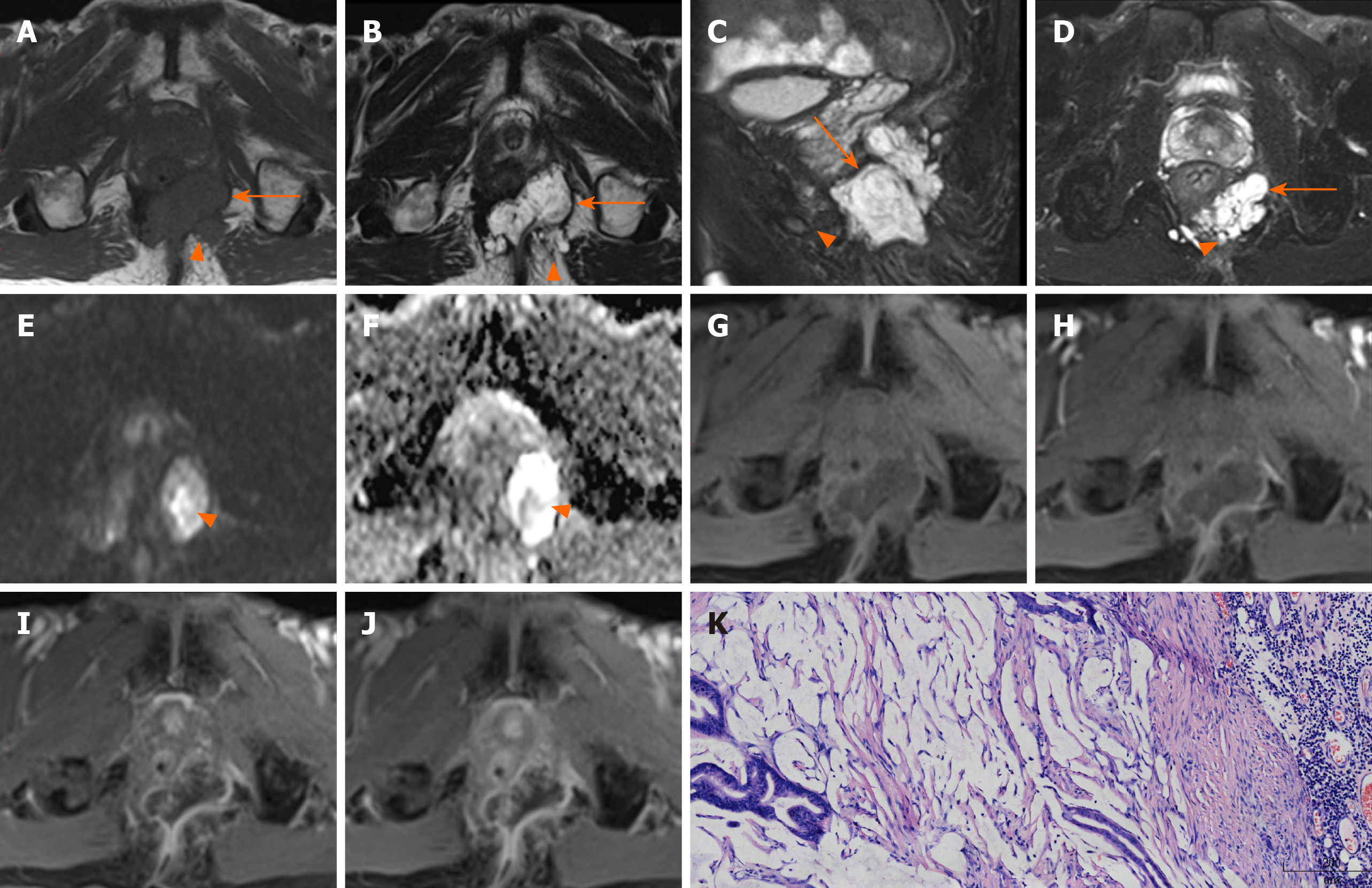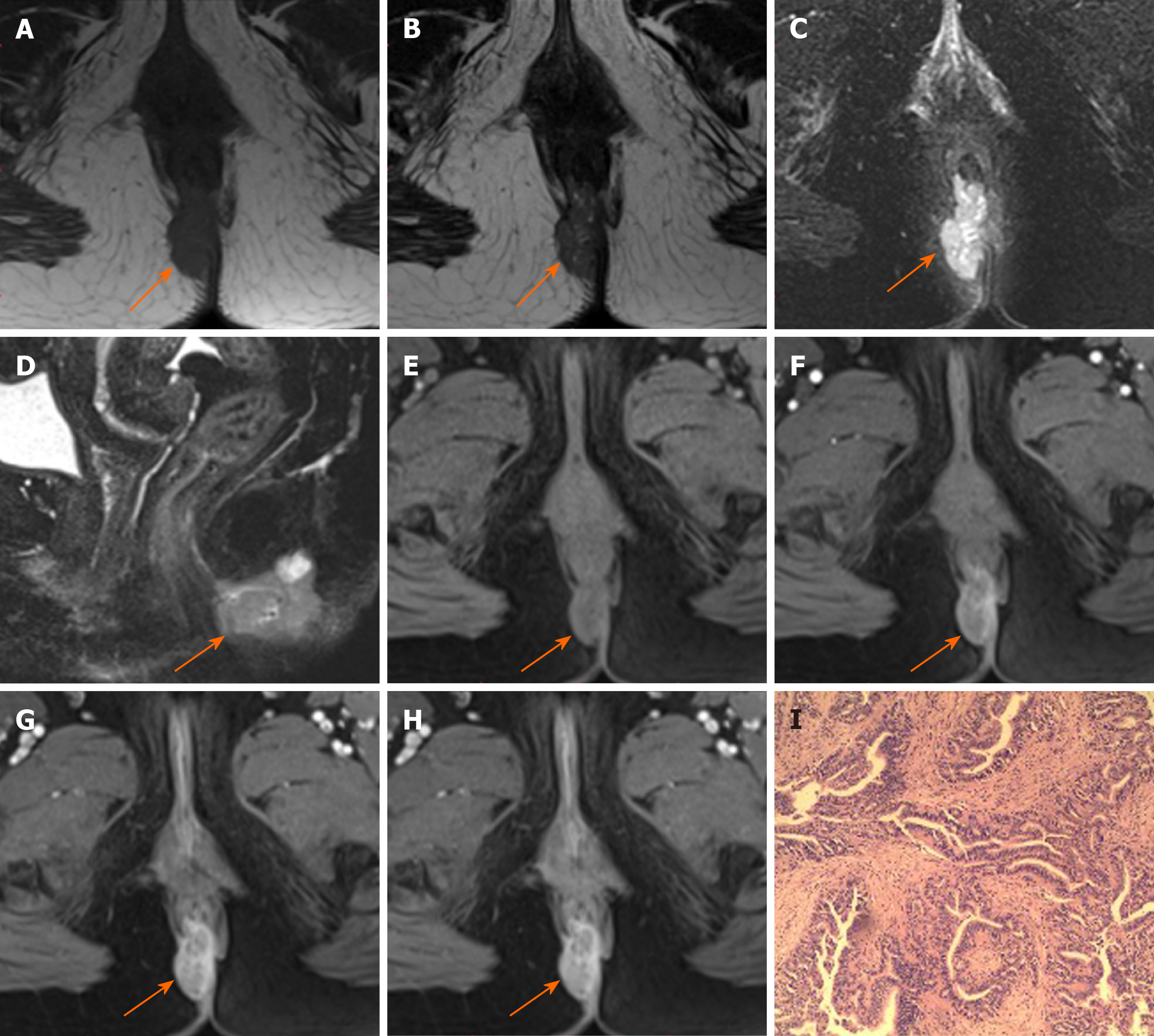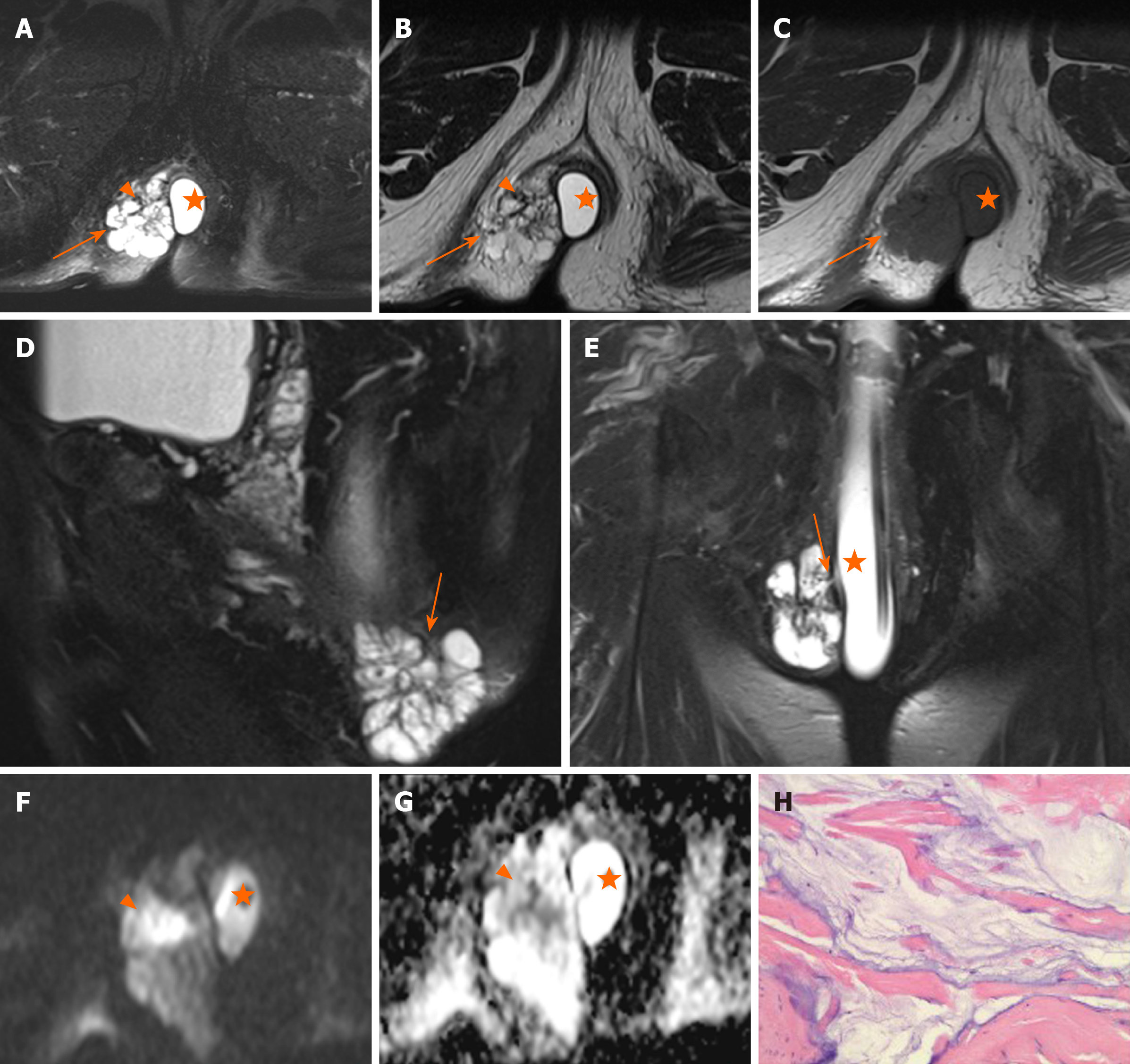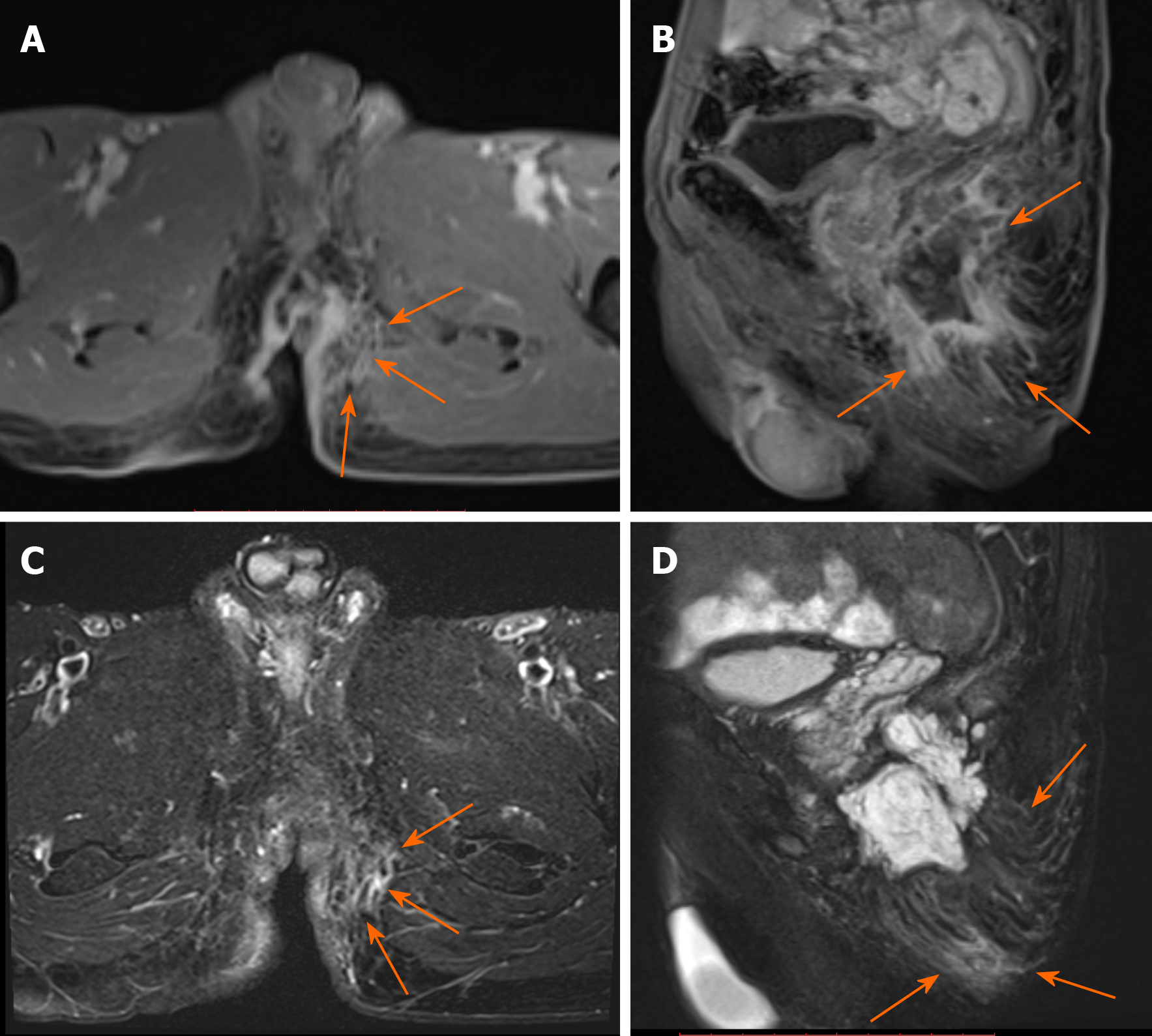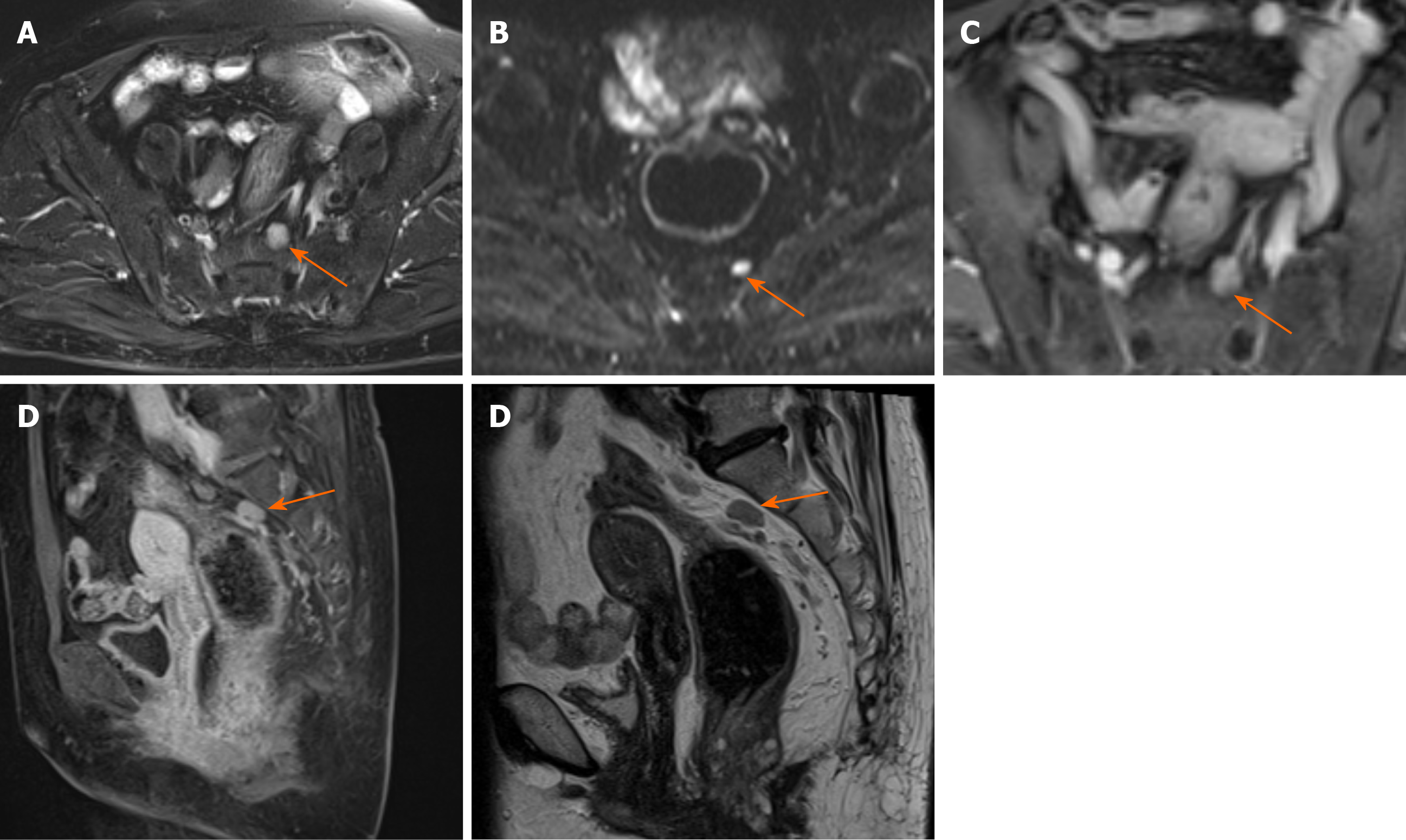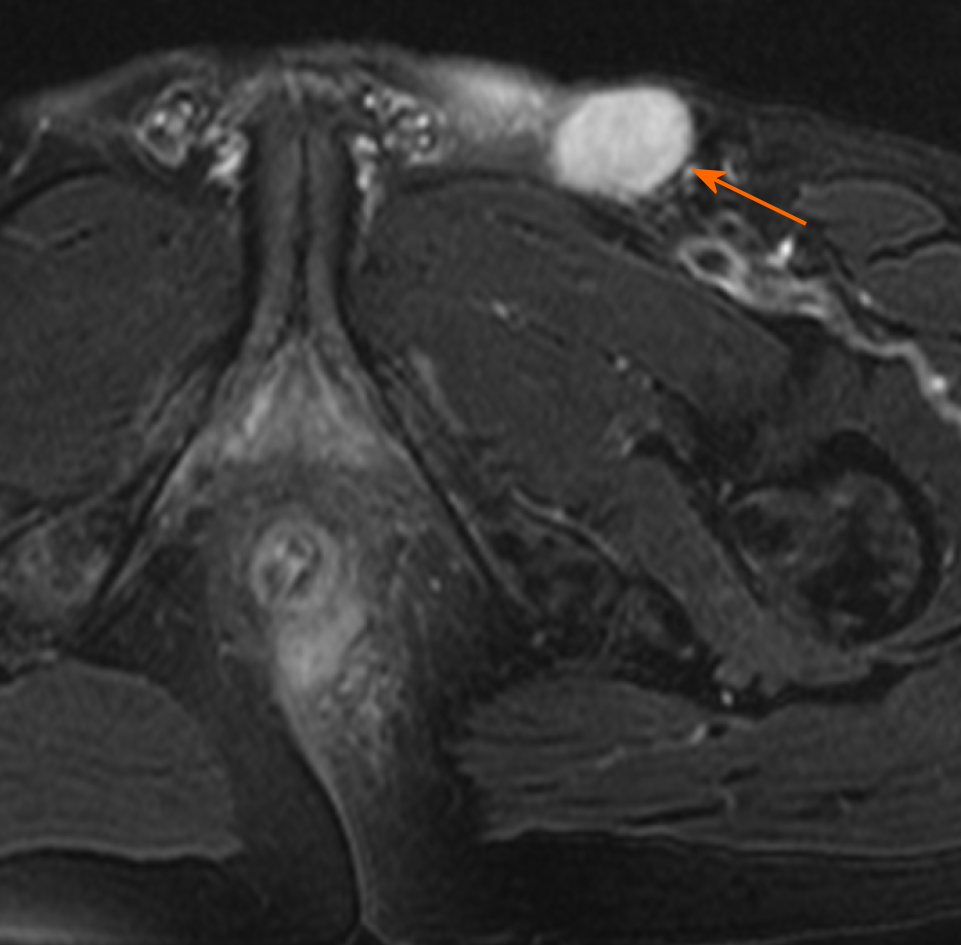Copyright
©The Author(s) 2020.
World J Clin Cases. Nov 6, 2020; 8(21): 5159-5171
Published online Nov 6, 2020. doi: 10.12998/wjcc.v8.i21.5159
Published online Nov 6, 2020. doi: 10.12998/wjcc.v8.i21.5159
Figure 1 Magnetic resonance images of a 71-year-old man with mucinous adenocarcinoma.
A: Axial T1WI; B: Axial T2WI; C: Sagittal FS-T2WI; D: Axial FS-T2WI. A-D images show that the tumor grew across the midline. This lesion was multiloculated, cauliflower-like, markedly hyperintense on FS-T2WI, with a thin capsule (orange arrows) and focally unclear boundary (orange triangles). E: Axial DWI shows a slightly hyperintense signal with focal hyperintense lesion (orange triangle); F: Axial ADC map shows hyperintense signal with focal hypointense lesion (orange triangle); G-I: Axial dynamic contrast-enhanced images show progressive mesh-like enhancement; K: The tumor was rich in mucus (hematoxylin and eosin staining; original magnification, × 100). T1WI: T1-weighted magnetic resonance imaging; FS-T2WI: Fat-suppressed T2-weighted magnetic resonance imaging.
Figure 2 Magnetic resonance images of a 52-year-old woman with adenocarcinoma.
A: Axial T1-weighted magnetic resonance imaging; B: Axial T2WI; C: Axial fat-suppressed T2-weighted magnetic resonance imaging (FS-T2WI); D: Sagittal FS-T2WI images show the tumor to the right (orange arrows). The tumor is oval and hyperintense on FS-T2WI without capsule. E-H: Axial dynamic contrast-enhanced images show persistent heterogeneous enhancement (orange arrows); I: Hematoxylin and eosin stained image (original magnification, × 200).
Figure 3 Magnetic resonance images of a 66-year-old man with mucinous adenocarcinoma.
A: Axial fat-suppressed T2-weighted magnetic resonance imaging (FS-T2WI); B: Axial T2WI; C: Axial T1-weighted magnetic resonance imaging; D: Sagittal FS-T2WI. A-D images show the tumor to the right. This lesion was multiloculated, cauliflower-like, and markedly hyperintense with focal slightly hypointense signal (orange triangle) on FS-T2WI, with a thin capsule (orange arrows) and focally unclear boundary; E: Coronal FS-T2WI shows a fistula between the mass and the anus; F: Axial diffusion-weighted image shows a slightly hyperintense with focal hyperintense lesion (orange triangle); G: Axial ADC map shows hyperintense with focal hypointense lesion (orange triangle). Artificial water sac can be seen in the rectum (orange star); H: hematoxylin and eosin staining (original magnification, ×200).
Figure 4 Magnetic resonance images of a 71-year-old man with mucinous adenocarcinoma.
A: Axial dynamic contrast-enhanced image; B: Sagittal dynamic contrast-enhanced image; A and B images show the contrast enhancement of the peritumoral areas. The boundary of the enhanced region was not clear (orange arrows); C: Axial FS-T2WI; D: Sagittal FS-T2WI. C and D images show that the enhanced region was slightly hyperintense (orange arrows).
Figure 5 Magnetic resonance images of a 57-year-old man with adenocarcinoma.
A: Axial fat-suppressed T2-weighted magnetic resonance imaging; B: Diffusion-weighted image shows that the lymph node was hyperintense; C: Dynamic contrast-enhanced image show right inguinal lymph node > 5 mm in the short axis, with irregular morphology and heterogeneous enhancement.
Figure 6 Magnetic resonance images of a 64-year-old woman with mucinous adenocarcinoma show perirectal lymph node with irregular morphology measuring > 5 mm in the short axis.
A: Fat-suppressed T2-weighted magnetic resonance imaging; B: Hyperintense on diffusion-weighted imaging; C and D: Heterogeneous enhancement on axial and sagittal dynamic contrast enhanced magnetic resonance imaging; E: Sagittal T2-weighted magnetic resonance imaging.
Figure 7 Magnetic resonance image of a 61-year-old man with mucinous adenocarcinoma.
The left inguinal lymph node was round and > 5 mm in the short axis on axial fat-suppressed T2-weighted magnetic resonance imaging.
- Citation: Zhu X, Zhu TS, Ye DD, Liu SW. Magnetic resonance imaging findings of carcinoma arising from anal fistula: A retrospective study in a single institution. World J Clin Cases 2020; 8(21): 5159-5171
- URL: https://www.wjgnet.com/2307-8960/full/v8/i21/5159.htm
- DOI: https://dx.doi.org/10.12998/wjcc.v8.i21.5159









